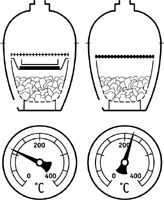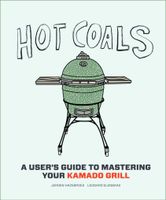Advertisement
Reverse sear or end sear
Appears in
By Jeroen Hazebroek and Leonard Elenbaas
Published 2015

This looks like the reverse procedure of the initial sear, but there are a few other factors that we need to take into account. The ingredient is first cooked almost to the final temperature, then grilled to finish. The thickness of the piece is important when reverse searing. If 130°F (55°C) is the desired internal temperature for a piece of meat, then we stop cooking at 125°F (50°C) for a 2¾-inch (7-cm) prime rib or bone-in rib-eye and start grilling. With thinner pieces, like a domestic duck breast, we’d stop at 120°F (48°C). The heat of the grilling process penetrates quickly to the interior of the meat when the meat is already close to the right temperature.

